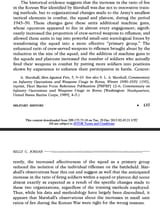Search Results
8/2/2025, 4:18:09 PM
>>64060839
>Having no idea what his methodology was
>SLA marshall
He made it up
No im serious, SLA marshall is very questionable when it comes the any hard facts. He was probably good when it comes to interviewing soldier about how they feel. But hard numbers? Probably not.
https://archive.org/details/commentary_on_infantry_weapons_korea_1950_51
Note, this is the same guy that made up the "only 1 in 4 soldiers actually fire to kill in combat"
Which is in serious doubt
https://www.canadianmilitaryhistory.ca/wp-content/uploads/2012/03/4-Engen-Marshall-under-fire.pdf
>For all his fine historical work – and there was much of it – Marshall was a man who suffered from a scholarly myopia, and saw precisely what he wanted to see. In his memoirs Marshall described how during his very first assignment as a combat historian, at the US amphibious assault on Makin Island in 1943, he witnessed not the "universal" low firing ratio he later championed, but green US Marines with jittery nerves hitting the beach and blazing away with their weapons at anything that moved and many things that did not. It was the opposite of the ratio of fire: frightened soldiers employing too much fire to help calm themselves and assert power over their situation.
>Most importantly, Marshall wrote that he decided not to report on this at the time, because at that point he believed it was low firing ratios that were the most serious problem of modern infantry warfare. Marshall wilfully disregarded important evidence because he had already made up his mind that non-firing was the "real" problem – at his very first deployment as a combat observer! He allowed his preconceptions to govern his findings. According to those who knew him, this was not unusual for Marshall. Colonel E.M. Parker, a fellow analyst during the Korean War, wrote that Marshall conducted his interviews and research in such a way as to support his tendentious ideas.
https://gwern.net/doc/history/s-l-a-marshall/2002-jordan.pdf
>Having no idea what his methodology was
>SLA marshall
He made it up
No im serious, SLA marshall is very questionable when it comes the any hard facts. He was probably good when it comes to interviewing soldier about how they feel. But hard numbers? Probably not.
https://archive.org/details/commentary_on_infantry_weapons_korea_1950_51
Note, this is the same guy that made up the "only 1 in 4 soldiers actually fire to kill in combat"
Which is in serious doubt
https://www.canadianmilitaryhistory.ca/wp-content/uploads/2012/03/4-Engen-Marshall-under-fire.pdf
>For all his fine historical work – and there was much of it – Marshall was a man who suffered from a scholarly myopia, and saw precisely what he wanted to see. In his memoirs Marshall described how during his very first assignment as a combat historian, at the US amphibious assault on Makin Island in 1943, he witnessed not the "universal" low firing ratio he later championed, but green US Marines with jittery nerves hitting the beach and blazing away with their weapons at anything that moved and many things that did not. It was the opposite of the ratio of fire: frightened soldiers employing too much fire to help calm themselves and assert power over their situation.
>Most importantly, Marshall wrote that he decided not to report on this at the time, because at that point he believed it was low firing ratios that were the most serious problem of modern infantry warfare. Marshall wilfully disregarded important evidence because he had already made up his mind that non-firing was the "real" problem – at his very first deployment as a combat observer! He allowed his preconceptions to govern his findings. According to those who knew him, this was not unusual for Marshall. Colonel E.M. Parker, a fellow analyst during the Korean War, wrote that Marshall conducted his interviews and research in such a way as to support his tendentious ideas.
https://gwern.net/doc/history/s-l-a-marshall/2002-jordan.pdf
Page 1
